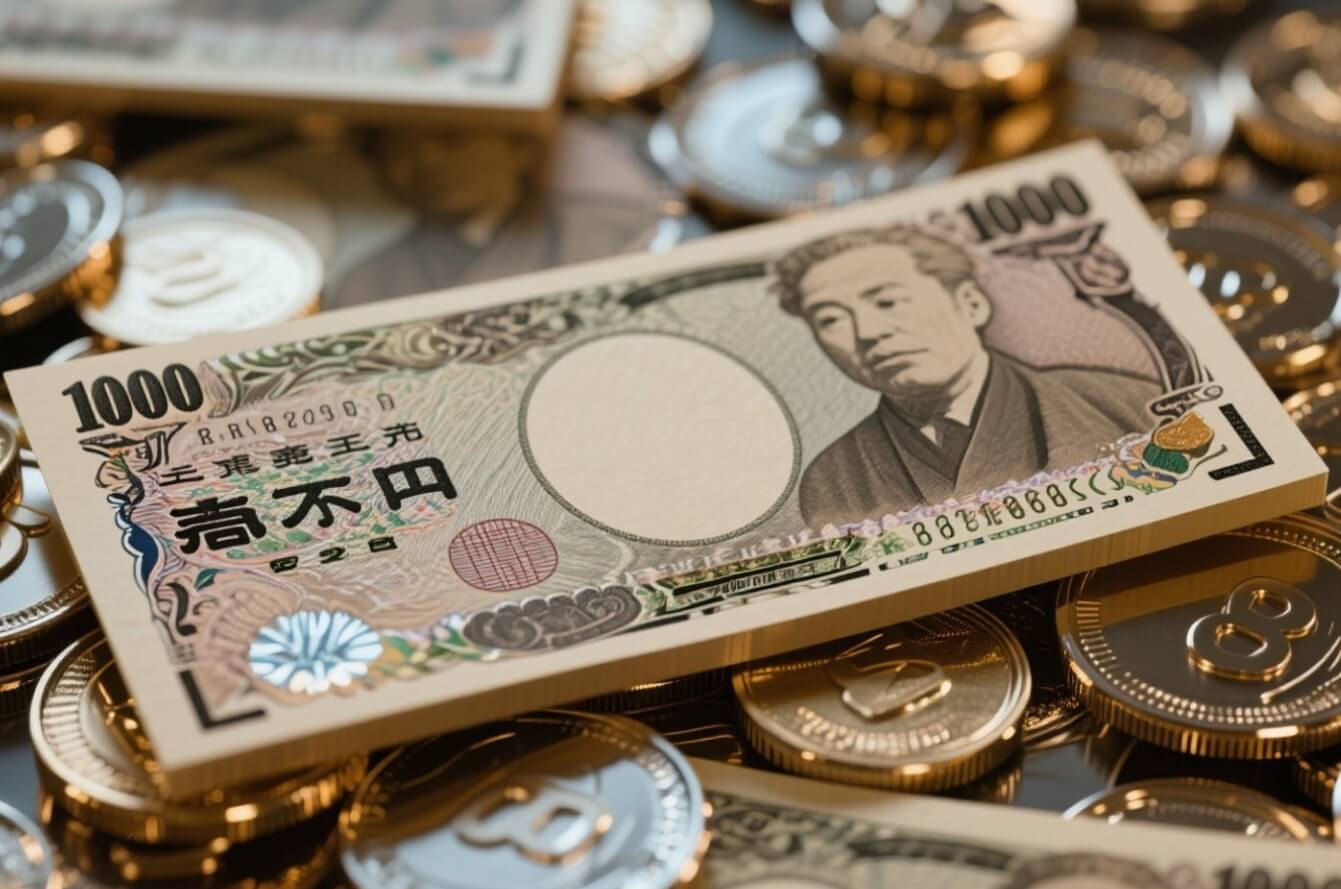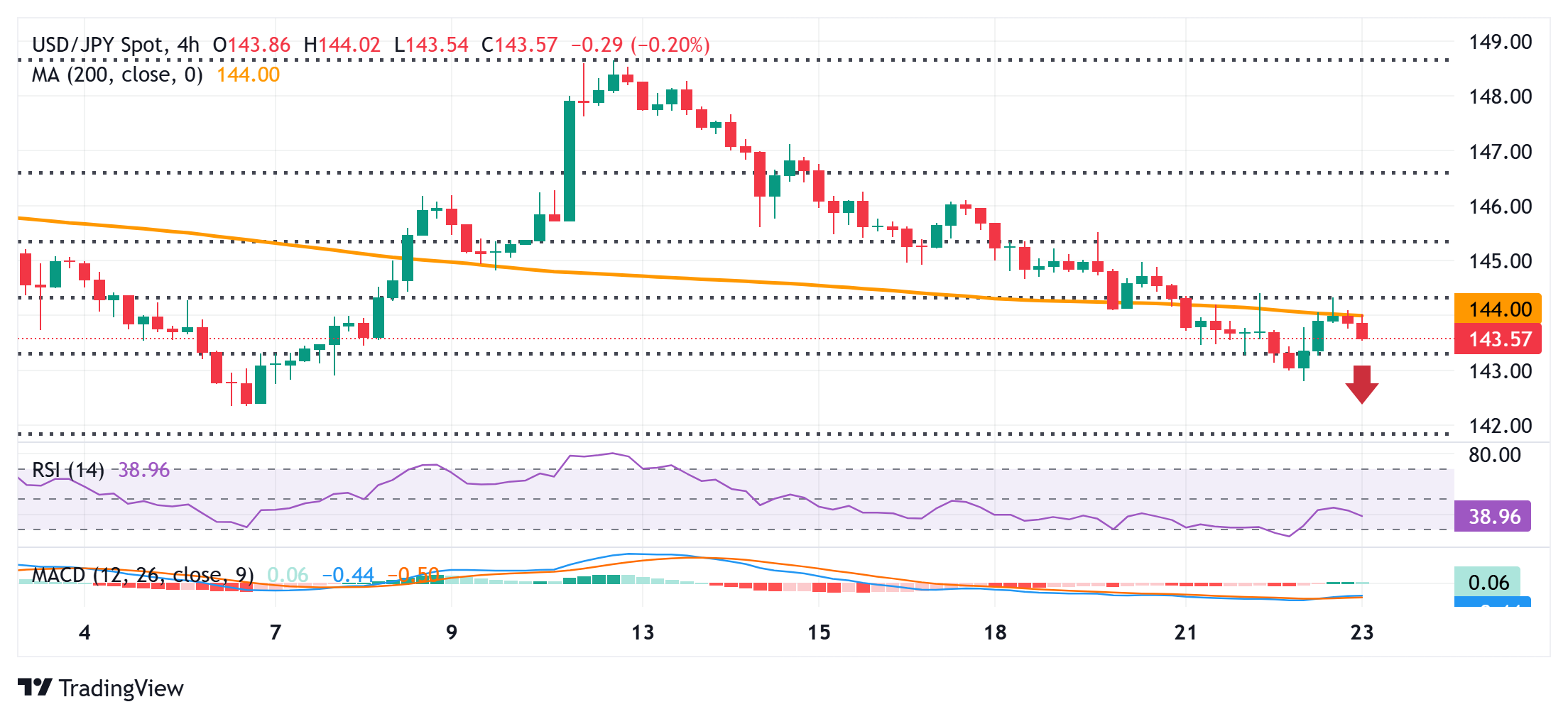
The Japanese Yen attracts fresh buyers as a hotter CPI print reaffirms BoJ rate hike bets.
Hopes for an early US-Japan trade deal and a weaker USD further weigh on USD/JPY.
The bullish JPY fundamental backdrop supports prospects for deeper losses for the pair.
The Japanese Yen (JPY) ticked higher on Friday following the release of hotter consumer inflation figures from Japan, which keeps the door open for more interest rate hikes by the Bank of Japan (BoJ). Investors, however, seem convinced that policymakers will assess tariffs and trade flows before making their next move. Nevertheless, this still marks a big divergence in comparison to bets that the Federal Reserve (Fed) will lower borrowing costs again in 2025. This further contributes to the JPY's outperformance against its American counterpart.
Meanwhile, US-Japan trade negotiations appear to be progressing as officials continue to meet regularly. In fact, Japan’s top tariff negotiator Ryosei Akazawa intends to visit the US around May 30 for another round of talks with the Trump administration. This raises hopes for an early trade deal and is seen as another factor lending support to the JPY. Adding to this, the emergence of fresh US Dollar (USD) selling fails to assist the USD/JPY pair to capitalize on the previous day's goodish rebound from the 142.80 region, or over a two-week low.
Japanese Yen benefits from stronger domestic consumer inflation figures and hawkish BoJ expectations
Data released by the Japan Statistics Bureau this Friday showed that the National Consumer Price Index (CPI) climbed by 3.6% YoY in April. Further details revealed that the National core CPI, which excludes volatile fresh food prices, arrived at 3.5% YoY in April versus 3.2% prior and 3.4% expected.
Furthermore, a gauge that excludes both fresh food and energy prices, and is closely watched by the Bank of Japan, edged up to the 3% YoY rate from 2.9% previous. Adding to this, expectations that higher wages will boost prices should maintain pressure on the BoJ to continue raising interest rates.
In fact, BoJ officials recently showed a willingness to hike interest rates further if the economy and prices improve as projected. In contrast, traders ramped up their bets for further interest rate cuts by the Federal Reserve following last week's softer US Consumer Price Index (CPI) and the Producer Price Index (PPI).
US President Donald Trump’s “One Big, Beautiful Bill” was passed by the House of Representatives Thursday and is headed to the Senate for approval. If it clears that hurdle and becomes law, the sweeping tax cut and spending bill could worsen the US budget deficit at a faster pace than previously expected.
China’s Commerce Ministry on Wednesday warned of legal action against individuals or organizations implementing US export restrictions on Huawei’s AI processors. This highlights persistent tensions between the world's two largest economies despite a preliminary trade agreement reached in Geneva earlier this month.
Meanwhile, the standoff revives fears of an economic downturn in the US, which, in turn, fails to assist the US Dollar to build on Thursday's gains led by upbeat US macro data. The US Department of Labor (DOL) reported that Initial Jobless Claims fell to 227K last week, pointing to a still resilient labor market.
Adding to this, a preliminary report released by S&P Global showed that the US Composite PMI Output Index rose to 52.1 in May from 50.6 in the previous month. The Services PMI increased to 52.3, compared to April's 50.8, reaching a two-month high, while the Manufacturing PMI came in at 52.3.
On the geopolitical front, Israel’s military continued to pound the Gaza Strip and block desperately needed food aid. Adding to this, Trump reportedly told European leaders that Russian President Vladimir Putin isn’t ready to end the war as he thinks he is winning, which should further underpin the safe-haven JPY.
Friday's US economic docket features the release of New Home Sales data, though the focus will be on speeches by influential FOMC members, which will drive the USD demand and the USD/JPY pair. Nevertheless, the fundamental backdrop suggests that the path of least resistance for spot prices is to the downside.
USD/JPY seems vulnerable after Thursday’s rejection near the 144.35-144.40 confluence support-turned-resistance

The overnight failure near the 144.40 confluence support breakpoint, comprising the 50% retracement level of the April-May rally and the 200-period Simple Moving Average (SMA) on the 4-hour chart, and the subsequent slide, favors bearish traders. This, along with negative oscillators on hourly/daily charts, validates the near-term negative outlook for the USD/JPY pair.
From current levels, the 143.25 area, or the 61.8% Fibonacci retracement level, could offer some support ahead of the 143.00 round figure. This is followed by the 142.80 region, or over a two-week low touched on Thursday, below which the USD/JPY pair could accelerate the fall towards the next relevant support near the 142.40-142.35 area before dropping to the 142.00 mark.
On the flip side, a sustained strength beyond the 144.35-144.40 confluence support-turned resistance could trigger a short-covering move and lift the USD/JPY pair to the 145.00 psychological mark. This is followed by the 145.35-145.40 hurdle, or the 38.2% Fibo. retracement level, which if cleared decisively might shift the near-term bias in favor of bullish traders.
* The content presented above, whether from a third party or not, is considered as general advice only. This article should not be construed as containing investment advice, investment recommendations, an offer of or solicitation for any transactions in financial instruments.


